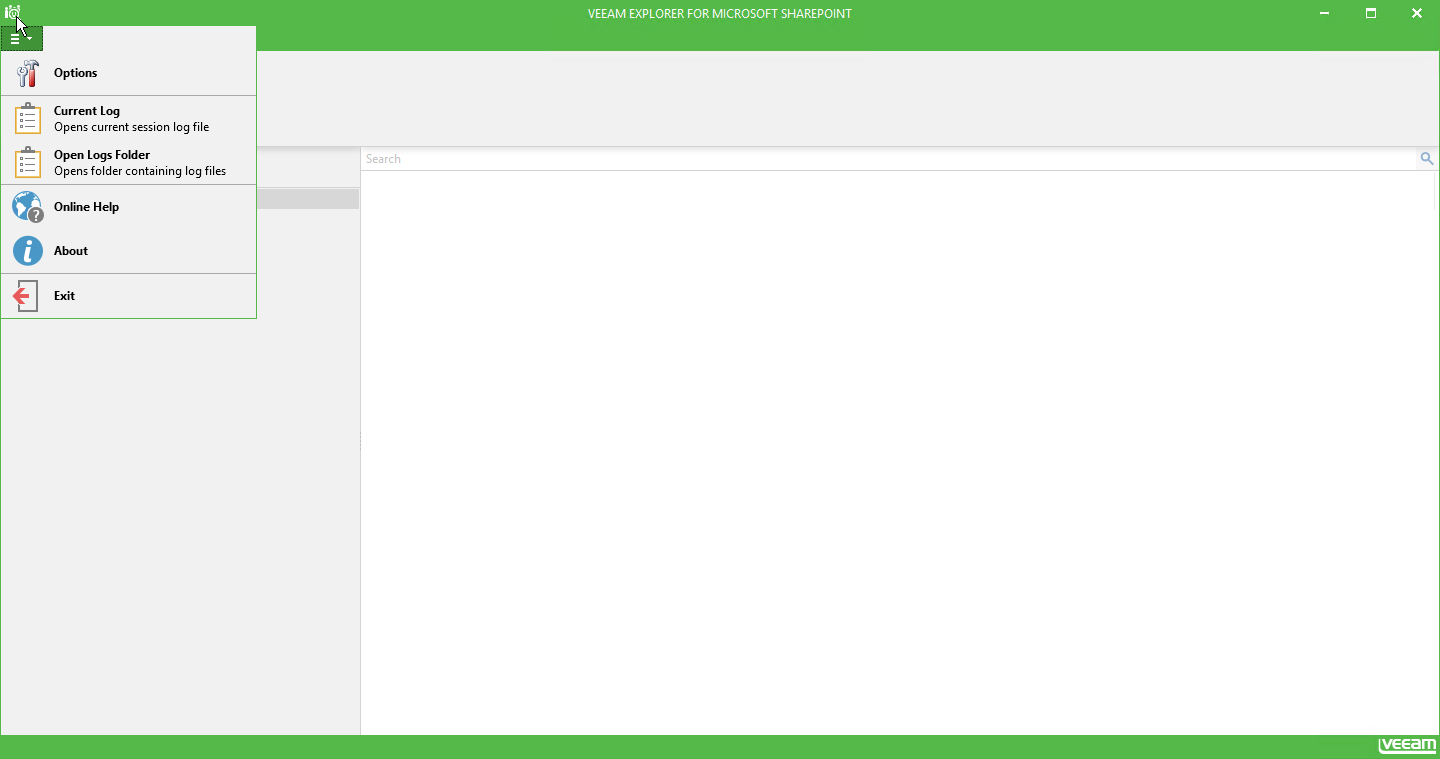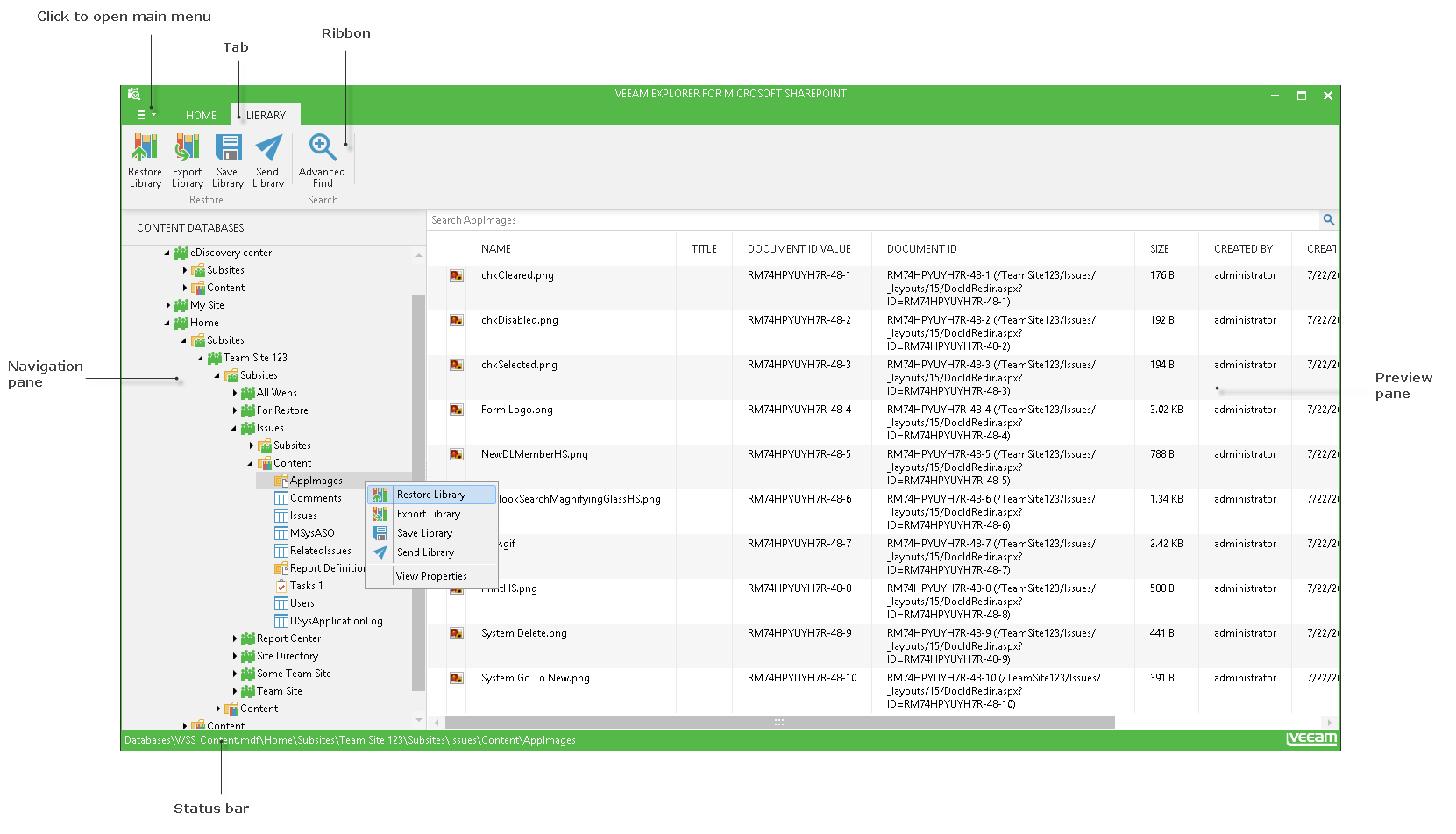The user interface of Veeam Explorer for Microsoft SharePoint is designed to let you quickly find commands that you may need to perform necessary data protection and disaster recovery tasks.
Main Menu
The main menu of Veeam Explorer for Microsoft SharePoint can be opened by clicking its icon in the top left corner of the main application window. Main menu comprises the following features:
- Options. Allows you to configure initial configuration settings.
- Current log and Open logs path. Allows you to view logs.
- Online help. Opens online web help page.
- About. Shows the current product information.
- Exit. Closes the program.

Main Application Window
The navigation pane, located on the left allows you to view the content of the database that you have added in a hierarchical representation, including content databases, sites, subsites, libraries and lists. It facilitates browsing for application items you want to restore. When you select a node in the navigation pane, you can browse its contents in the preview pane - for example, having selected a document library on the left, you can see all its documents on the right.
Operation commands in Veeam Explorer are organized into logical groups and collected under the tabs on the ribbon. The ribbon is displayed at the top of the main application window.
- The Home ribbon tab provides quick access to some common operations.
- Other tabs contain commands specific for certain entities appear when the corresponding nodes are selected in the navigation pane.
For example, if you select a document library in the navigation tree, the Library tab displaying buttons for operations with libraries will appear on the ribbon. If you then select a document in the preview pane, the Document tab with the corresponding menu commands will be displayed.
Display Theme
When you open the Veeam Explorer, its display theme settings are imported from the Veeam Backup & Replication configuration. So, if you want to change the display theme, you should do it in Veeam Backup & Replication general options, as described in its User Guide, and then re-open Veeam Explorer.








